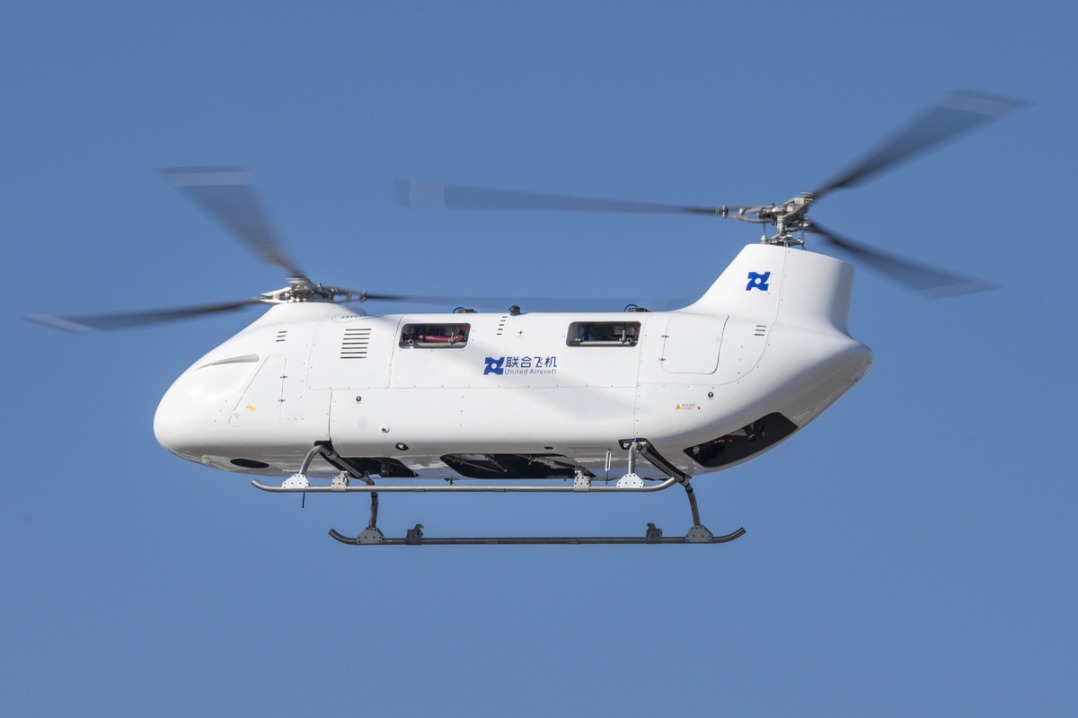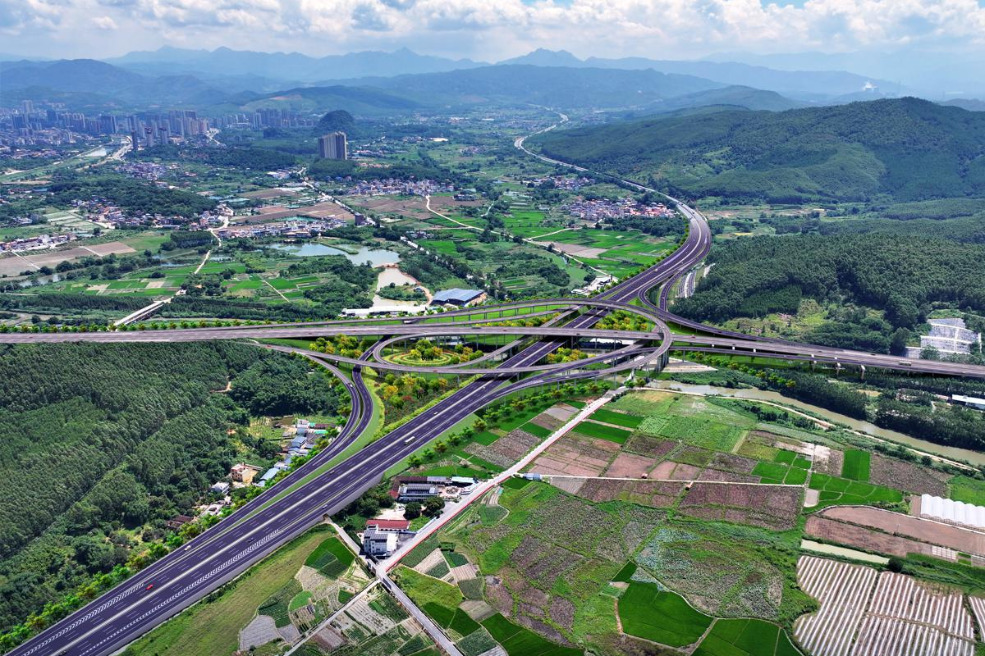Airport's expansion cements role as intl gateway

Guangzhou Baiyun International Airport, in the Guangdong provincial capital, officially opened its long-awaited Terminal 3 as well as a new runway on Thursday, marking a major expansion that cements its position as one of the world's busiest air hubs.
The airport now has three terminals and five runways, boosting its annual passenger capacity to 140 million and cargo capacity to 6 million metric tons. Officials said the additions will help the airport meet surging travel demand across the Guangdong-Hong Kong-Macao Greater Bay Area, where annual passenger volumes already exceed 120 million.
China Eastern Airlines flight MU6308 had the honor of being the first departure from the new terminal when its domestically developed C919 aircraft bound for Beijing lifted off at 2:59 pm. The flight, which took off from the airport's fifth runway, landed in Daxing International Airport at about 5:50 pm.
Li Xiaoliang, who piloted the terminal's maiden flight, said the commissioning of T3 and the fifth runway at the Baiyun airport is an important milestone in the construction of civil aviation hubs.
"All crews on board are very excited to witness this historic moment," he said before the plane departed.
Five carriers have set up shop in T3: China Eastern, Shanghai Airlines, China United Airlines, Juneyao Airlines and Okay Airways.
Already ranking among the world's busiest in terms of both passenger and cargo volumes, the Baiyun airport's latest expansion reinforces Guangzhou's role as a global gateway and a key driver in southern China's modernization plans.
The third expansion project for the airport was under construction for five years, at a cost of 53.77 billion yuan ($7.56 billion).
Song Jian, an executive with Guangdong Airport Authority, said the state-of-the-art terminal has been equipped with many intelligent technologies and self-service facilities to assist passengers.
"The lights and air conditioning will be automatically and intelligently adjusted according to passenger flow and the changes of the number of flights," he said.
A passenger of the maiden flight surnamed Li praised the smooth operations at the check-in area as well as the highly efficient security check channels, adding that the facilities in the waiting rooms surpassed expectations.
"Personally, I was quite surprised by the arcade tracery window design in the commercial area, and the indoor garden in the departure hall has also brightened my eyes," he said.
Designed as a tribute to Guangzhou's nickname, "city of flowers", T3's architecture evokes a blooming blossom, weaving in imagery of the Pearl River and Baiyun Mountain. The result is a landmark meant to symbolize the city's urban gateway image.
Upon completion, the terminal immediately became a national leader for multiple innovations, boasting several national firsts. It features a panoramic aviation observation platform, a large-scale terminal decorated with warm color tones, a massive public art system, and exquisite restrooms.
In keeping with its nature theme, the terminal is filled with flora. Its ancient tree park and botanical garden are firsts for an airport in China, and its airside original ecological garden is now the nation's largest.
Airport officials described T3 as blending "Chinese style, southern charm, international appeal, and contemporary sense", setting a new paradigm for China's airport terminals.
Located at the eastern part of T3, the fifth runway is 3,600 meters long and 45 meters wide, meeting the takeoff and landing requirements of large global Category E aircraft, including the Boeing 777 and Airbus 350 models.
Contact the writers at liwenfang@chinadaily.com.cn




































